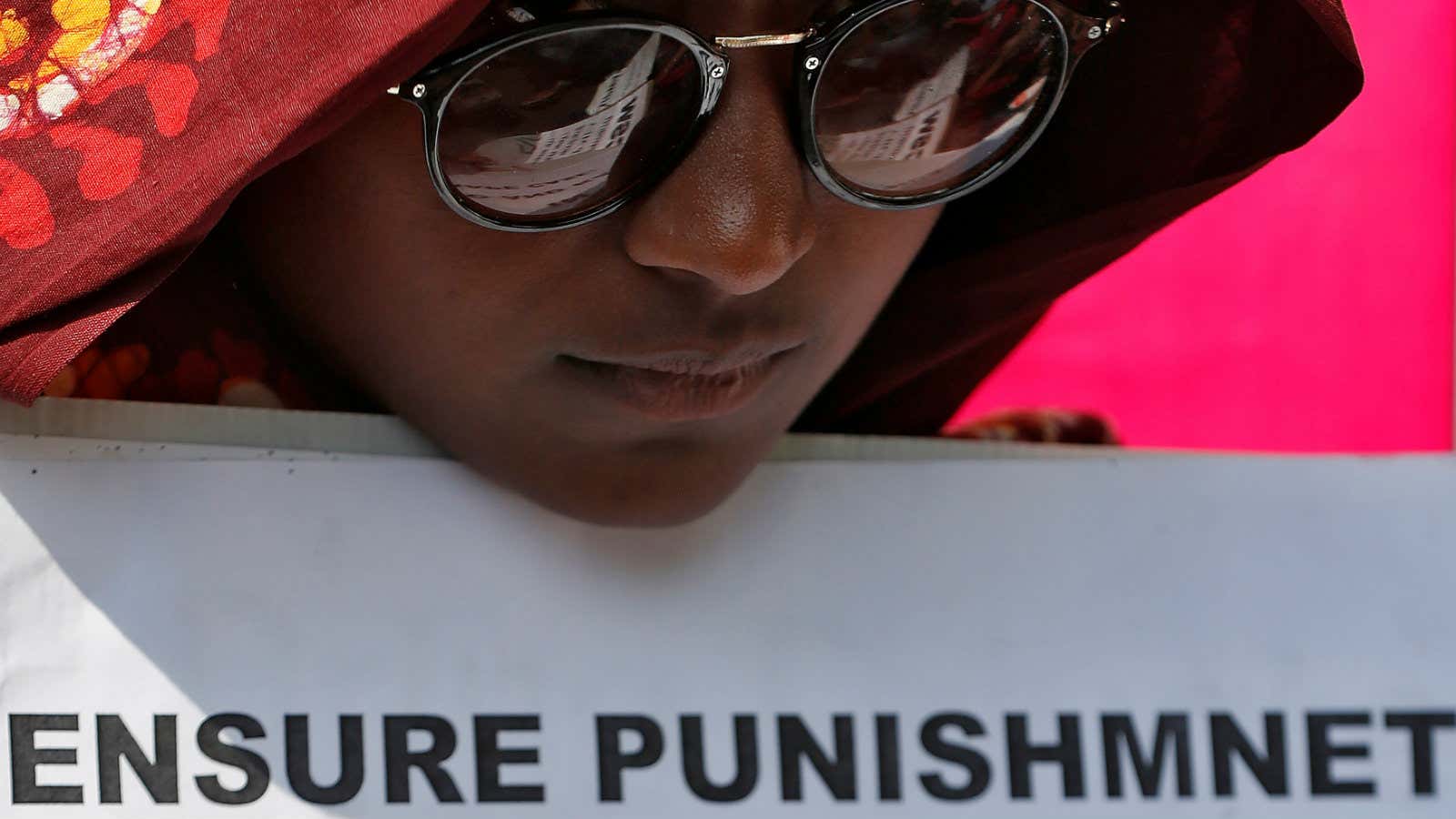Five years after the brutal New Delhi gang rape highlighted the crisis of women’s safety in India, two more gruesome cases—involving children this time—have shown that solving the problem will need a lot more than just laws. For, what’s adding to the gravity of the cases are the responses of politicians and key political groups.
In the town of Kathua, Jammu & Kashmir, the brutal rape and murder of an eight-year-old Muslim girl has sparked protests by a local Hindu nationalist group, shockingly, in support of the accused. The protesters allege that the probe itself was botched. Even lawyers in the town tried to prevent the police from filing charges against them. Meanwhile, in Unnao, Uttar Pradesh, a BJP lawmaker who reportedly raped a minor girl months ago was arrested only following heavy criticism of the state government.
These cases merely demonstrate the role of powerful interests and religious prejudices, which add to women’s existing difficulties of securing justice in a country where even the police and doctors rarely offer support.
However, the two cases also signal a worrying trend: the rising incidence of child rape. In 2016 alone, the National Crime Records Bureau recorded a staggering 19,765 cases of child rape across the country, up 82% from the year before. And given the persistent taboo surrounding sex and sexual assault, it’s likely that the actual incidence is even higher.
In 2016, data for which is the most recent available, Madhya Pradesh recorded the most cases, followed by Maharashtra and Uttar Pradesh.
The numbers are proof of the alarming situation. But given that the perpetrators include powerful men, thousands of India’s young girls remain at risk.
